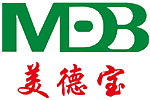-
-
Company Profile
-
Waterproof breathable membrane
Vapor barrier film
Barrier film
Reflective insulation film
The Science Behind PVC Waterproofing Membranes and Their Effectiveness
Release time:
2025-06-03
The Science Behind PVC Waterproofing Membranes and Their Effectiveness
Table of Contents
1. Introduction to PVC Waterproofing Membranes
2. The Composition of PVC Waterproofing Membranes
3. Understanding the Mechanism of Action
4. Benefits of Using PVC Waterproofing Membranes
4.1 Durability and Longevity
4.2 Cost-Effectiveness
4.3 Environmental Resistance
5. Installation Process of PVC Waterproofing Membranes
5.1 Surface Preparation
5.2 Application Techniques
6. Maintenance and Longevity of PVC Membranes
7. Common Misconceptions About PVC Waterproofing Membranes
8. Frequently Asked Questions
9. Conclusion
1. Introduction to PVC Waterproofing Membranes
PVC (Polyvinyl Chloride) waterproofing membranes are engineered materials designed to prevent water infiltration in buildings and structures. As a vital component of modern construction, these membranes are celebrated for their versatility, effectiveness, and durability. They are used widely in various applications, including roofs, basements, and foundations, providing a reliable barrier against moisture and water-related damages.
2. The Composition of PVC Waterproofing Membranes
PVC waterproofing membranes are made predominantly from polyvinyl chloride, a synthetic plastic polymer. The manufacturing process involves combining PVC with additives such as plasticizers, stabilizers, and UV inhibitors. This combination creates a flexible, robust membrane capable of withstanding environmental stressors.
**Key Components:**
- **Polyvinyl Chloride:** The primary material that imparts waterproofing properties.
- **Plasticizers:** Enhance the flexibility of the membrane, making it easier to install.
- **Stabilizers:** Protect the membrane from degradation due to UV light exposure.
- **Fillers:** Improve physical properties and reduce production costs.
This thoughtful composition results in a product that not only prevents water ingress but also adheres well to various substrates, making it a preferred choice for many construction projects.
3. Understanding the Mechanism of Action
PVC waterproofing membranes function on the principle of creating a continuous barrier that prevents water from penetrating the underlying structure. The membranes are designed to be applied directly to surfaces such as concrete, metal, or wood, depending on the specific use case.
**How They Work:**
- **Surface Bonding:** The adhesive properties of PVC allow it to bond firmly with the substrate, ensuring a watertight seal.
- **Flexibility and Elasticity:** These membranes can stretch and compress without cracking, adapting to movements in the building structure.
- **Resistance to Water Pressure:** PVC membranes can withstand hydrostatic pressure, making them suitable for below-grade applications.
This combination of features ensures that PVC waterproofing membranes effectively keep buildings dry, preventing mold and structural damage.
4. Benefits of Using PVC Waterproofing Membranes
The advantages of PVC waterproofing membranes extend beyond just keeping water out. Here, we explore various benefits that make them an optimal choice for construction projects.
4.1 Durability and Longevity
PVC membranes are known for their longevity, often lasting upwards of 20 years with proper maintenance. Their robust construction means they can resist punctures, tears, and other forms of damage that can compromise waterproofing integrity.
4.2 Cost-Effectiveness
While the initial investment in PVC waterproofing membranes may be higher than some alternatives, their durability and low maintenance requirements make them a cost-effective option in the long run. Fewer repairs and replacements lead to reduced lifetime costs.
4.3 Environmental Resistance
PVC membranes are engineered to withstand a variety of environmental conditions, including extreme temperatures, UV radiation, and chemical exposure. This resilience ensures that they maintain their waterproofing capabilities regardless of external factors.
5. Installation Process of PVC Waterproofing Membranes
The effectiveness of PVC waterproofing membranes greatly depends on proper installation. Below are the steps involved in the installation process.
5.1 Surface Preparation
Before installation, the surface must be thoroughly cleaned and inspected for any imperfections. This may involve repairing cracks, removing debris, and ensuring the substrate is dry.
5.2 Application Techniques
There are various application methods for PVC membranes, including:
- **Fully Adhered System:** The membrane is glued to the substrate, providing excellent wind uplift resistance.
- **Mechanically Fastened System:** The membrane is secured with fasteners, allowing for easier installation and adjustments.
- **Loose-Laid System:** The membrane is laid down without adhesive, relying on weight or ballast to keep it in place.
Each method has its advantages and suitable applications, depending on the specific project requirements.
6. Maintenance and Longevity of PVC Membranes
To ensure the maximum lifespan of PVC waterproofing membranes, regular maintenance is essential. This includes periodic inspections for wear and tear, especially after severe weather events. Cleaning the membranes to remove dirt and debris can also prolong their effectiveness.
**Tips for Maintenance:**
- Inspect for punctures or tears regularly.
- Clean surfaces with suitable non-abrasive cleaners.
- Address any issues immediately to prevent water infiltration.
7. Common Misconceptions About PVC Waterproofing Membranes
Despite their popularity, several myths surround PVC waterproofing membranes. Here, we debunk some common misconceptions.
- **Myth 1:** PVC membranes are not environmentally friendly.
- **Fact:** Modern PVC membranes are often made with environmentally conscious practices and can be recycled.
- **Myth 2:** All waterproofing membranes are the same.
- **Fact:** There are significant differences in material composition and performance among different types of membranes.
Understanding these misconceptions helps in making informed decisions regarding waterproofing solutions.
8. Frequently Asked Questions
**Q1: How long do PVC waterproofing membranes last?**
A1: With proper installation and maintenance, PVC membranes can last more than 20 years.
**Q2: Can PVC membranes be used in below-grade applications?**
A2: Yes, PVC membranes are ideal for below-grade applications due to their resistance to hydrostatic pressure.
**Q3: Are PVC waterproofing membranes easy to install?**
A3: While the installation process requires expertise, trained professionals can efficiently install PVC membranes.
**Q4: How do PVC membranes compare to other waterproofing solutions?**
A4: PVC membranes offer superior durability and flexibility compared to many other waterproofing materials, making them a preferred choice for many applications.
**Q5: What maintenance is required for PVC waterproofing membranes?**
A5: Regular inspections and cleaning to remove debris and address any damage are crucial for maintaining their effectiveness.
9. Conclusion
In conclusion, **PVC waterproofing membranes represent a significant advancement in construction technology**, providing effective solutions for moisture management in buildings. Their unique composition, durability, and cost-effectiveness make them an excellent choice for architects, builders, and homeowners alike. By understanding the science behind these membranes and their applications, stakeholders can make informed decisions that enhance the longevity and safety of their structures. Investing in high-quality PVC waterproofing membranes ensures peace of mind against water damage, safeguarding properties for years to come.Previous article
recommend News
Pvc Waterproofing Membrane Factory
2025-05-27
Sell one
Kelly Ho
15133606577
kelly.ho@tjmeidebao.com
Sales two
All- All
- Product Management
- News
- Introduction
- Enterprise outlets
- FAQ
- Enterprise Video
- Enterprise Atlas
Sweep the attention to us

COOKIES
Our website uses cookies and similar technologies to personalize the advertising shown to you and to help you get the best experience on our website. For more information, see our Privacy & Cookie Policy
COOKIES
Our website uses cookies and similar technologies to personalize the advertising shown to you and to help you get the best experience on our website. For more information, see our Privacy & Cookie Policy
These cookies are necessary for basic functions such as payment. Standard cookies cannot be turned off and do not store any of your information.
These cookies collect information, such as how many people are using our site or which pages are popular, to help us improve the customer experience. Turning these cookies off will mean we can't collect information to improve your experience.
These cookies enable the website to provide enhanced functionality and personalization. They may be set by us or by third-party providers whose services we have added to our pages. If you do not allow these cookies, some or all of these services may not function properly.
These cookies help us understand what you are interested in so that we can show you relevant advertising on other websites. Turning these cookies off will mean we are unable to show you any personalized advertising.
Copyright: Tianjin Medabao Technology Co., Ltd.
Business License
-


